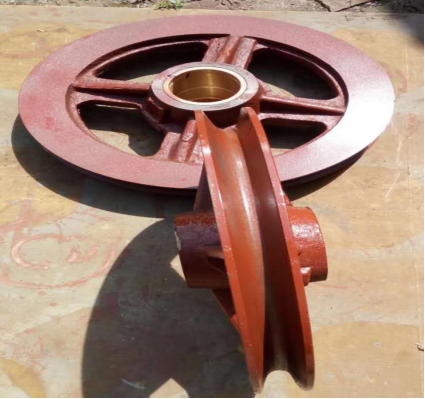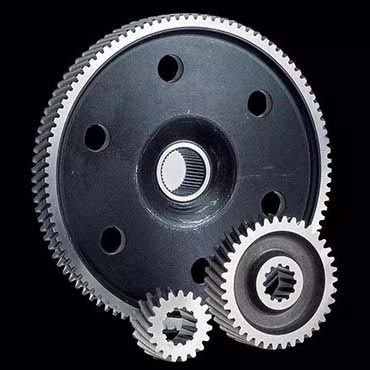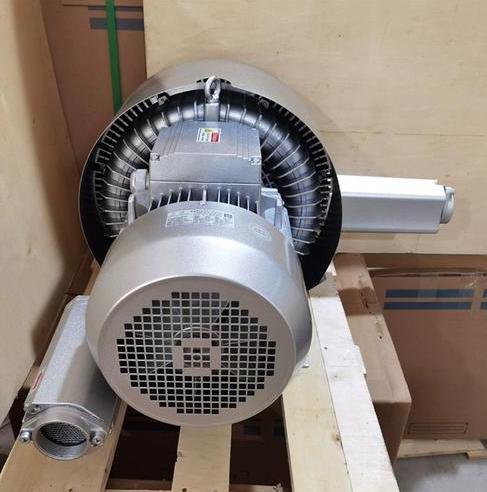Tower cranes are capable of lifting heavy loads to great heights. However, their operation relies on a complex interplay of various components. The quality of these parts is paramount, as it directly impacts the safety, efficiency, and overall performance of the crane. In this article, we will delve into the fundamental components of a tower crane, exploring their functions and the critical role they play in ensuring safe and efficient construction operations.
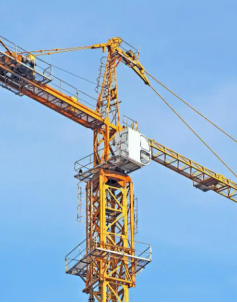
How Does a Tower Crane Work?
A tower crane operates by using a tall vertical tower as a support structure, from which a horizontal arm or jib extends. This jib can be raised or lowered, and it rotates around the tower. At the end of the job, there is a hook or other attachment that can be used to lift and move heavy loads. The crane uses a system of cables and pulleys to raise and lower the loads, and the movement of the jib is controlled by electric motors. By combining the vertical reach of the tower and the horizontal reach of the jib, tower cranes can lift and move heavy loads over a large area.
Components of a Tower Crane and Their Functions
A tower crane is a complex piece of machinery composed of several interconnected components that work together to lift and move heavy loads. Here’s a breakdown of the primary parts and their roles:
Cabin
The cabin is the operator’s control center. It’s a pressurized, climate-controlled space designed to provide a safe and comfortable working environment. Inside, the operator finds a range of controls, including joysticks, buttons, and levers, which they use to manipulate the crane’s various functions. Additionally, the cabin is equipped with a variety of instruments and displays. These include load indicators, wind speed meters, and camera systems to provide the operator with a comprehensive view of the work area.
Slewing Mechanism
The slewing mechanism is essentially the crane’s rotating platform. It allows the entire crane, including the tower, jib, and counterweight, to rotate 360 degrees. This rotation is crucial for reaching different areas of the construction site without physically moving the base of the crane. The slewing mechanism is typically driven by powerful electric motors and relies on a complex system of gears and bearings to ensure smooth and precise rotation.
Tower Crane Electrical Parts
The electrical system is the lifeblood of a tower crane. It powers and controls every aspect of the crane’s operation. Key components include:
- Motors: Electric motors are used to drive the hoisting, slewing, and trolley mechanisms. These motors are typically powerful and durable, capable of handling heavy loads and operating for extended periods.
- Control Systems: These systems coordinate the actions of the various motors to ensure smooth and precise operation. They also monitor the crane’s status and provide feedback to the operator.
- Wiring: The wiring system connects all the electrical components, ensuring reliable power delivery and signal transmission. It’s often protected by conduits and armored cables to withstand harsh weather conditions and potential damage.
Tower Crane Hoisting Mechanism
The hoisting mechanism is the heart of the tower crane’s lifting capabilities. It comprises a drum, cables, and a hook. The drum, powered by a high-torque electric motor, winds or unwinds the cables to raise or lower the hook and its attached load. The cables, typically made of high-strength steel, are crucial for ensuring the safe and efficient lifting of heavy loads. The hook, a vital component, is designed to securely attach to various types of loads, from structural steel beams to precast concrete elements.
Tower Crane Structural Components
The structural components of a tower crane form its skeletal framework. The tower, a towering vertical structure, provides the primary support for the entire crane. It’s constructed from sturdy steel sections bolted or welded together. The jib, a horizontal arm extending from the top of the tower, supports the load and counterweight. Its length and angle can be adjusted to reach different areas of the worksite. The counterweight, a heavy mass positioned at the opposite end of the jib, counterbalances the load being lifted, ensuring the crane’s stability and preventing tipping.
Tower Crane Trolley Mechanism
The trolley mechanism allows for the horizontal movement of the load along the length of the jib. It consists of a trolley that travels on rails embedded in the jib. The trolley is powered by electric motors that drive the wheels along the rails. This enables the operator to position the load precisely, whether it’s placing a beam on a specific floor or aligning a precast concrete panel.
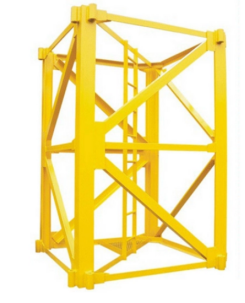
Why High-Quality Tower Crane Parts Are Essential for Tower Cranes
The use of high-quality components in tower cranes is not merely a preference but a critical necessity for several reasons:
Safety First
- Structural Integrity: High-quality components ensure that the crane can withstand the stresses and strains of heavy lifting without compromising structural integrity. This significantly reduces the risk of catastrophic failures like collapses, which could lead to severe injuries or fatalities.
- Reliability: Reliable components minimize unexpected breakdowns, reducing the likelihood of accidents caused by malfunctioning equipment. This is particularly important in construction environments where safety is paramount.
Efficiency and Productivity
- Optimal Performance: High-quality components are designed to deliver optimal performance, leading to increased lifting capacity, faster operation, and reduced downtime. This translates into higher productivity on construction sites.
- Longer Lifespan: Durable components extend the overall lifespan of the crane, reducing the frequency of repairs and replacements. This lowers long-term operating costs.
Precision and Accuracy
- Controlled Movements: High-quality components, especially in control systems and hydraulics, enable precise and controlled movements of the crane. This is essential for delicate operations like placing precast concrete elements or installing glass facades.
- Reduced Damage: Accurate positioning of loads minimizes the risk of damage to the load, the crane itself, or surrounding structures.
Compliance with Safety Standards
- Regulatory Adherence: High-quality components often meet or exceed industry standards and regulations. This ensures that the crane is safe to operate and complies with local building codes and safety requirements.
Cost-Effectiveness
- Reduced Maintenance Costs: While high-quality components may have a higher upfront cost, they typically require less maintenance and have a longer lifespan. This can lead to significant cost savings over the long term.
Environmental Impact
- Durability: High-quality components contribute to a more sustainable construction industry by reducing the need for frequent replacements, which in turn minimizes waste and resource consumption.
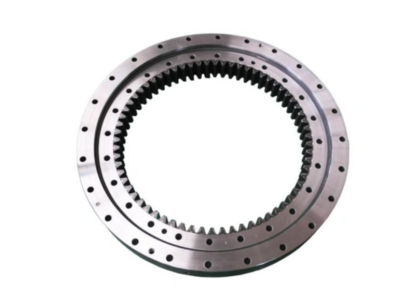
Securing Safety and Efficiency with High-Quality Parts
The use of high-quality components in tower cranes is not merely a preference, but a necessity. By investing in premium-quality parts, construction companies can prioritize safety, enhance efficiency, and reduce long-term costs. As the construction industry continues to evolve, the demand for reliable and durable tower cranes will only increase. CPTC as a professional tower crane parts supplier will provide you with first-class products all the time!
Related Products
Casting Tower Crane Pulley
High strength;…
Tower Crane Trolley Device
Multiple functions
Intuitive operation
Tower Crane Hoisting Pinion
High strength; precision maching
Different size for choosing
Centrifugal Fan for Slewing Mechanism
Simple design
Prevents overheating
Ensures smooth operation

